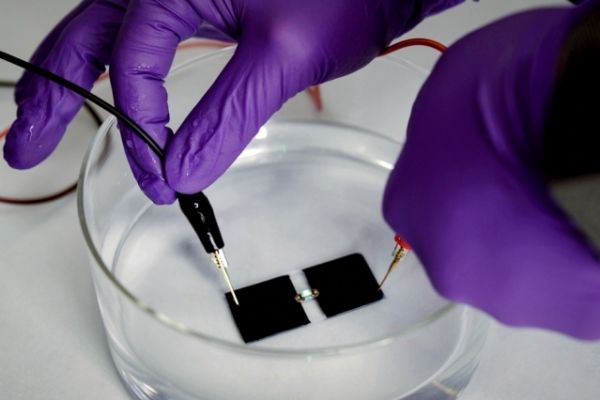Polymers that are good conductors of electricity could be useful in biomedical devices, to help with sensing or electrostimulation, for example. But there has been a sticking point preventing their widespread use: their inability to adhere to a surface such as a sensor or microchip, and stay put despite moisture from the body.
Now, researchers at MIT have come up with a way of getting conductive polymer gels to adhere to wet surfaces.
The new adhesive method is described today in the journal Science Advances in a paper by MIT doctoral student Hyunwoo Yuk, former visiting scholar Akihisa Inoue, postdoc Baoyang Lu, and professor of mechanical engineering Xuanhe Zhao.
Most electrodes used for biomedical devices are made of platinum or platinum-iridium alloys, Zhao explains. These are very good electrical conductors that are durable inside the moist environment of the body, and chemically stable so they do not interact with the surrounding tissues. But their stiffness is a major drawback. Because they can’t flex and stretch as the body moves, they can damage delicate tissues.
Read more at Massachusetts Institute of Technology
Image: The conductive polymer material was tested for its electrical conductivity while immersed in water to demonstrate its durability and ability to maintain adhesion. CREDIT: Melanie Gonick, MIT


